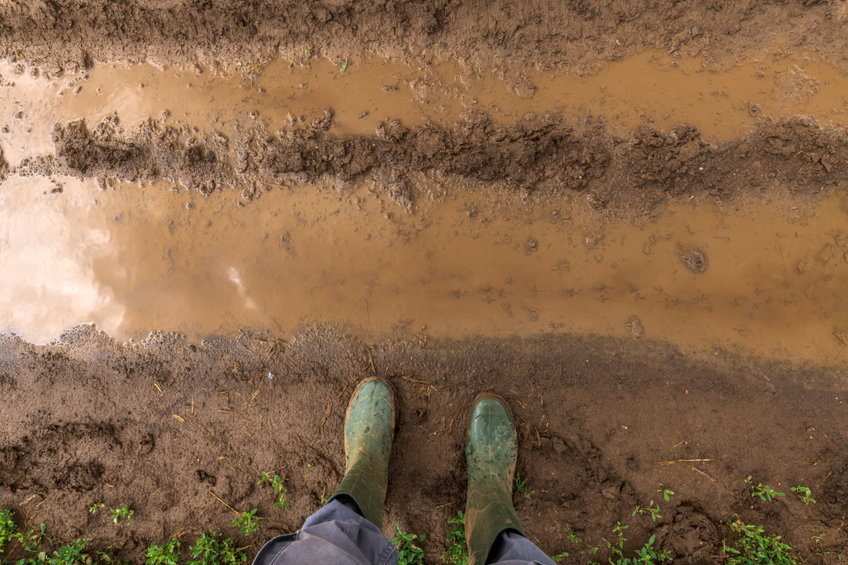
Farmer in rubber boots standing on muddy dirt road in countryside, feet from above
While it’s not necessarily a problem in all locations, many people have to worry about protecting their garden from excessive rainfall.
Plants love water! Too little, and they’ll wither away. But too much water can also cause problems.
Plants that are stuck drowning in waterlogged soil can succumb to root rot.
These days, unpredictable weather is more and more commonplace. Periods of drought followed by flash floods are not unheard of. And this wild weather can have negative consequences for your home garden.
So how can you protect your garden from excessive rainfall? Here are a few tips.
How to protect the garden from excessive rainfall
Here’s what to do to keep your plants from drowning after a rainstorm.
Plan ahead.
I’m not talking about checking the weather. I’m talking about being particularly careful during the garden planning process. Avoid starting a garden in an area where water pools. After heavy rainfall, plants in these areas are more likely to die due to root rot.
And make sure the soil drains well. Add organic matter to the soil to improve its condition and drainage capabilities.
Stop walking on the soil.
Make sure you can reach all areas of your garden plot without having to walk on the soil. Walking on soil compacts it and can make it more likely to become waterlogged in the future.
The University of Delaware Cooperative Extension has some helpful tips on how to avoid soil compaction.
Quit watering!
This is an obvious one, but it’s something people forget to do. Keep an eye on the weather forecast and turn off your sprinklers and irrigation systems before a rainstorm. And I know the weather seems nice right now, but unless your plants are dying of thirst, skip hand watering when a storm is brewing.
Clean your gutters.
Grab a ladder and clean out your gutters to protect your garden from excessive rainfall. Clogged gutters can cause water runoff and flood your garden beds.
Pick plants wisely.
If flooding is an inevitability where you live, choose plants that can tolerate moist, humid conditions. Select disease-resistant varieties that aren’t as likely to pick up fungal or viral infections brought on by very wet weather.
Use raised beds.
Raised beds and containers (with drainage holes) are less likely to become waterlogged than in-ground beds. You can find one on Amazon here. They’re also great for areas where the soil isn’t super fertile. Bonus: No more kneeling and way less bending over!
Add a French drain to your yard.
DIY this helpful drainage solution called a French drain to improve drainage on your property.

Steph Coelho is a freelance writer gardening in zone 5b. She is a certified Square Foot Gardener and has taught various garden-related workshops. When she’s not digging in the dirt or writing, she’s cooking up fresh produce, running, or listening to her favorite podcasts.
Leave a Reply